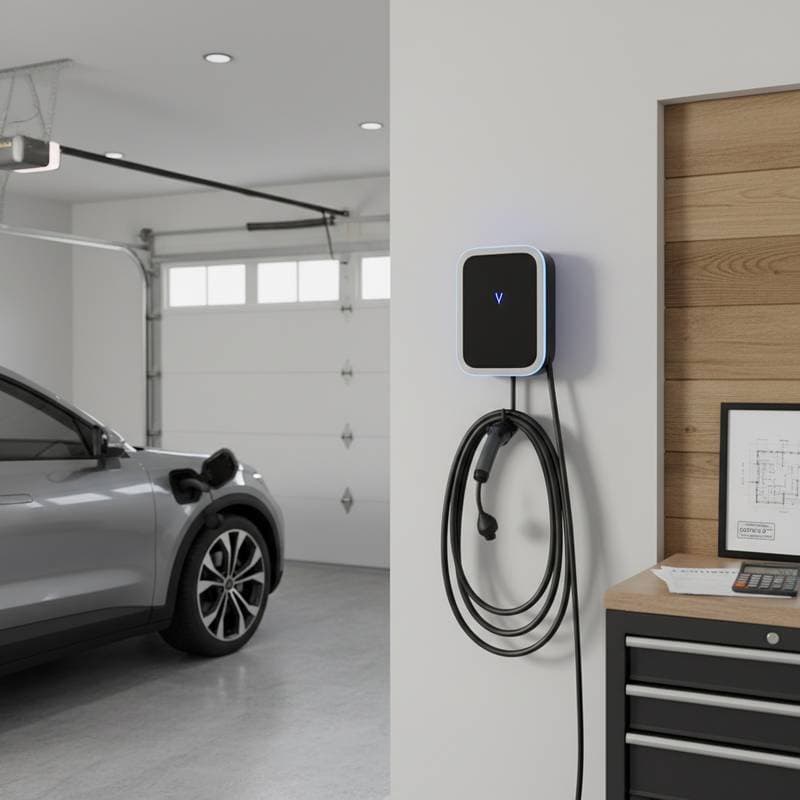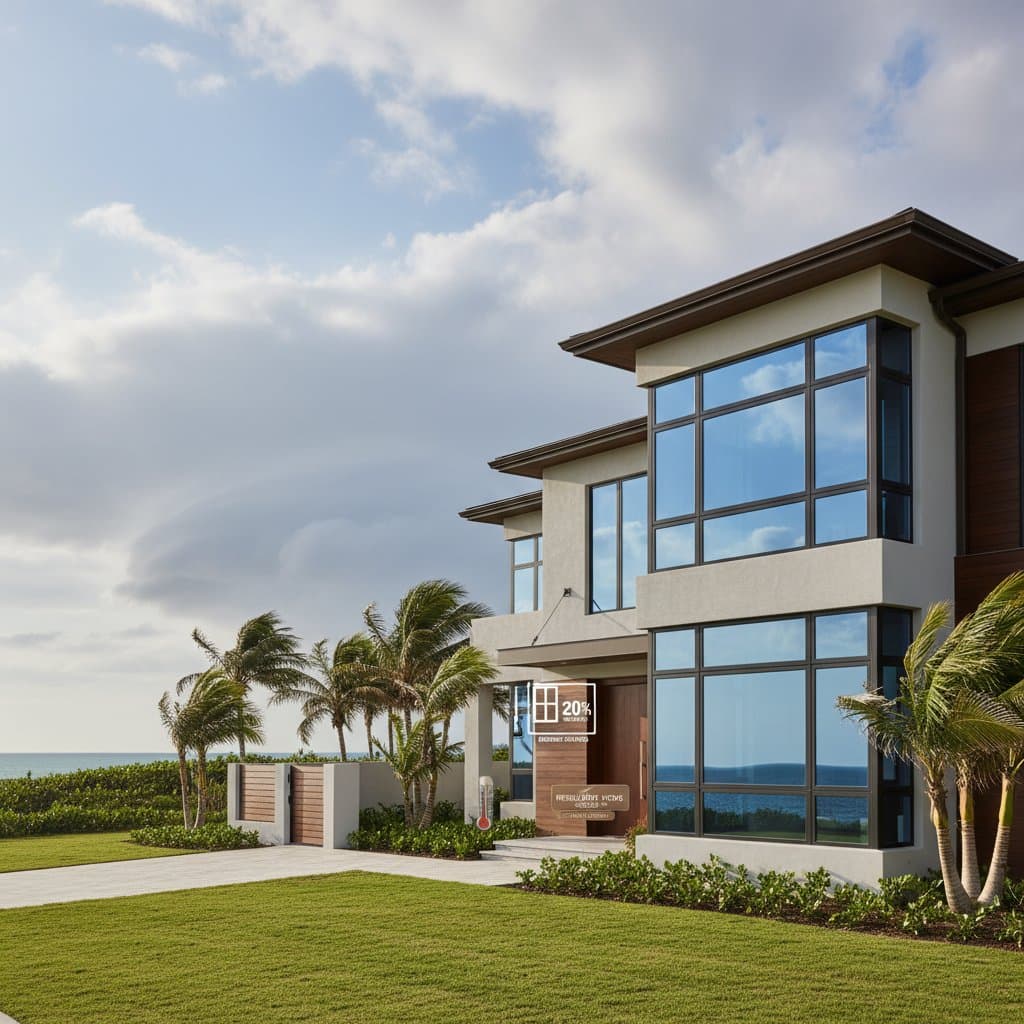Smart Glass: Achieving 15% Energy ROI in 2025 Homes
Smart glass, also referred to as switchable or dynamic glass, modulates its tint to regulate heat and light entry. This technology appeals to homeowners seeking reduced energy expenses, superior indoor comfort, and a contemporary aesthetic without relying on cumbersome blinds or shades. It proves particularly valuable in new constructions, renovations, or residences challenged by excessive sunlight and thermal gain.
Cost Overview
Across the United States, installed smart glass typically ranges from $50 to $125 per square foot. For most households, expenses average $70 to $95 per square foot. Basic configurations with minimal controls may descend to $40 per square foot, whereas premium setups incorporating automation and sensors can reach $150 per square foot.
Several elements influence pricing:
- The dimensions and quantity of windows
- The selected glass technology, such as electrochromic, thermochromic, or photochromic variants
- Compatibility with intelligent home ecosystems
- The intricacy of electrical wiring and infrastructure
- Factors including brand reputation, warranty duration, and installer fees
In a standard three-bedroom residence, the total investment for a comprehensive installation falls between $18,000 and $35,000, contingent upon the project's scale.
Advantages and Drawbacks
Advantages
- Reduces energy consumption by as much as 20% in regions with intense sunlight
- Enhances occupant comfort by minimizing glare and thermal buildup
- Eliminates the requirement for external shading solutions in numerous spaces
- Integrates seamlessly with smart thermostats and lighting controls
- Elevates property resale value through demonstrable technological enhancements
Drawbacks
- Entails a greater initial outlay compared to conventional double-pane windows
- Demands electrical connectivity for models that require power
- Necessitates specialized servicing should electronic components malfunction
- Offers restricted tint or color variations in certain manufacturers' lines
- Involves costly replacement for damaged panels
Varieties of Smart Glass
Smart glass manifests in multiple configurations, each tailored to specific applications and performance needs.
Electrochromic Glass
This type employs low-voltage electricity to adjust tint opacity. It excels in whole-home automation scenarios, providing granular control via mobile applications or environmental sensors.
Thermochromic Glass
Responsive to temperature fluctuations, this variant operates without electrical wiring. It suits passive solar management in areas prone to high heat.
Photochromic Glass
Activated by varying light levels, photochromic glass performs effectively in overhead applications like skylights or sunrooms. Although independent of power sources, it affords less precise regulation.
Suspended Particle Devices (SPD)
These systems utilize particles that orient under electrical influence, enabling rapid transitions to opaque states. They prove ideal for expansive glass facades or luxury installations demanding profound shading.
Liquid Crystal (LC) Glass
This option toggles between transparent and opaque frosted states, prioritizing privacy over light modulation. It finds common use in bathrooms or office dividers.
Installation: DIY or Professional?
Installing smart glass demands expertise in electrical systems, sealing techniques, and calibration processes, rendering it unsuitable for amateur efforts.
DIY Assessment:
- Difficulty level: High
- Estimated duration: Multiple days for a complete window array
- Required equipment: Multimeter, electrical tools, sealants, and glazing materials
- Potential hazards: Electrical malfunctions, inadequate sealing, or warranty invalidation
Engage professional services under these circumstances:
- When linking to home automation networks
- For substituting numerous oversized windows
- If permits or electrical evaluations are mandatory
- To secure warranty-protected workmanship
Certified installers guarantee precise wiring and moisture-resistant seals, safeguarding both the glass units and structural integrity.
Essential Installation Steps
- Evaluate window positions relative to solar exposure and electrical accessibility.
- Precisely measure frame openings and procure custom-sized glass panels.
- Diligently extract existing glazing to preserve frame condition.
- Install electrical conduits as required for power supply and control units.
- Secure smart glass into frames with manufacturer-recommended sealants.
- Link control mechanisms to electrical sources and verify tint functionality.
- Apply trim and insulating materials to achieve an airtight seal.
- Configure automation parameters using the provided software or application.
- Polish glass exteriors with a gentle, non-abrasive cleaner and microfiber cloth.
Upkeep and Durability
Properly installed smart glass endures 20 to 30 years of service. Maintain surfaces akin to ordinary windows, applying mild cleaners quarterly. Annually examine seals for deterioration or water intrusion, and monitor electrical connections if response times lag.
Most manufacturers extend a 10-year limited warranty encompassing tint mechanisms and electrical elements. To maximize longevity:
- Steer clear of abrasive or chemical-intensive cleaners
- Ensure wiring remains protected from moisture
- Conduct biannual tests of tint operations
Viable Alternatives
Should the expense of smart glass deter investment, evaluate these substitutes:
Low-E Windows
These reflect infrared heat passively, without electrical demands. Installation costs $40 to $65 per square foot, offering reduced functionality at a fraction of the price.
Window Films
Applied as supplementary layers, films mitigate heat and glare for $8 to $15 per square foot. Their lifespan approximates 10 years, providing a temporary solution.
Motorized Shades
Programmable blinds deploy to obstruct sunlight as needed, priced at $300 to $800 per window. They deliver adaptability yet introduce visual clutter indoors.
Tinted Glass
Permanently shaded without power requirements, this option remains straightforward and robust, though devoid of adaptive capabilities.
Regional Considerations
Expenses and benefits vary by location due to labor costs, weather patterns, and regulatory frameworks.
- In arid, sun-drenched locales, return on investment accelerates via diminished air conditioning demands.
- Temperate or frigid zones yield modest gains, primarily through enhanced insulation.
- Maritime environments often necessitate corrosion-proof framing materials.
- Metropolitan building codes may mandate impact-resistant tempered or laminated glass.
- Elevated labor rates in urban centers can inflate installation fees by 15% or greater.
Verify permitting requirements prior to electrical modifications; certain jurisdictions treat powered glass as regulated electrical installations compliant with National Electrical Code standards.
Return on Investment and Market Value
Property owners typically realize a 15% energy return on investment within initial years post-installation. Savings derive from optimized heating, ventilation, and air conditioning operations alongside stabilized indoor climates. Residences featuring smart glass command premium listing prices, attributable to cutting-edge features and operational efficiencies; professional appraisers frequently attribute up to 50% of the system's cost to enhanced valuation upon verification.
Safety Protocols
Although smart glass operates on low-voltage systems, meticulous wiring practices remain essential.
- Deactivate power circuits prior to attaching control modules.
- Employ Underwriters Laboratories-certified connectors and cabling.
- Refrain from embedding wires within insulation or damp areas absent protective conduits.
- Consult a licensed electrician for terminal connections.
- Adhere to producer guidelines for grounding to avert electrostatic issues.
For elevated installations or broad glass surfaces, specify safety-engineered tempered or laminated variants to minimize injury risks from breakage.
Implementing Your Upgrade
Smart glass represents a strategic enhancement for those prioritizing energy conservation and livability. While the preliminary expenditure exceeds traditional options, tangible returns manifest in utility reductions and elevated home equity. Obtain estimates from no fewer than three accredited specialists, verifying their proficiency with preferred technologies and warranty assurances prior to commencement.
Pairing with intelligent thermostats amplifies efficiency gains. In homes equipped with photovoltaic arrays or usage trackers, synchronization occurs effortlessly. Thoughtful execution converts sun-challenged areas into balanced, cost-effective havens that yield sustained dividends.
Frequently Asked Questions
Does smart glass justify its expense?
Affirmative, particularly for properties with substantial utility costs or pronounced solar exposure. Returns stem from curtailed cooling requirements and augmented daily comfort.










